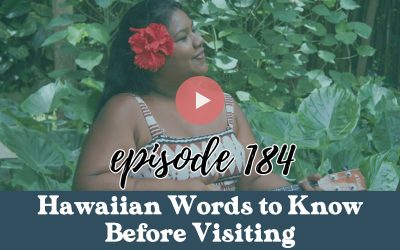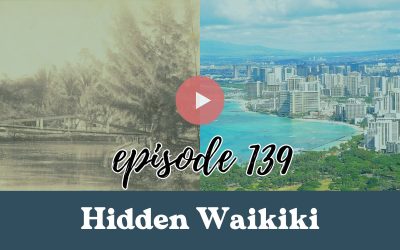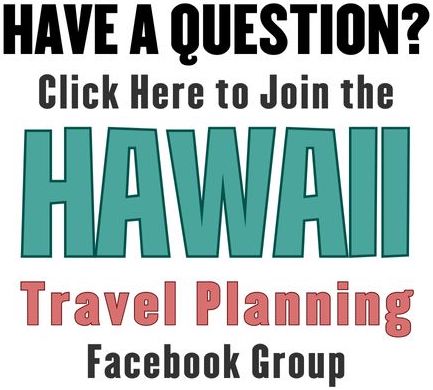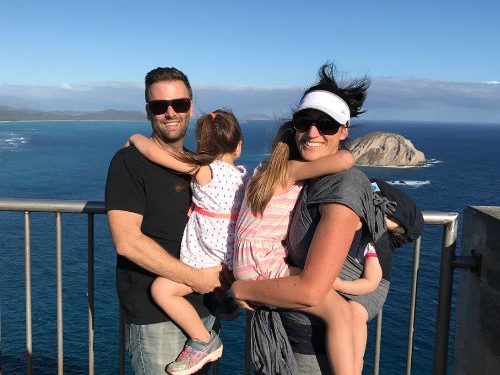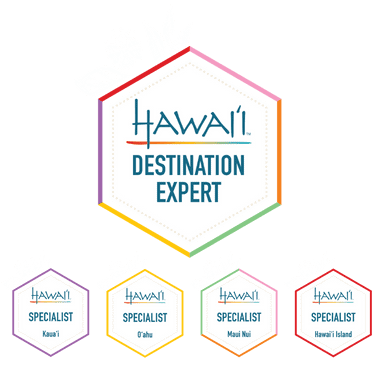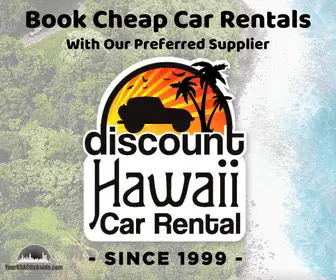Ep. 178: 7 Things Not to Do in Hawaii
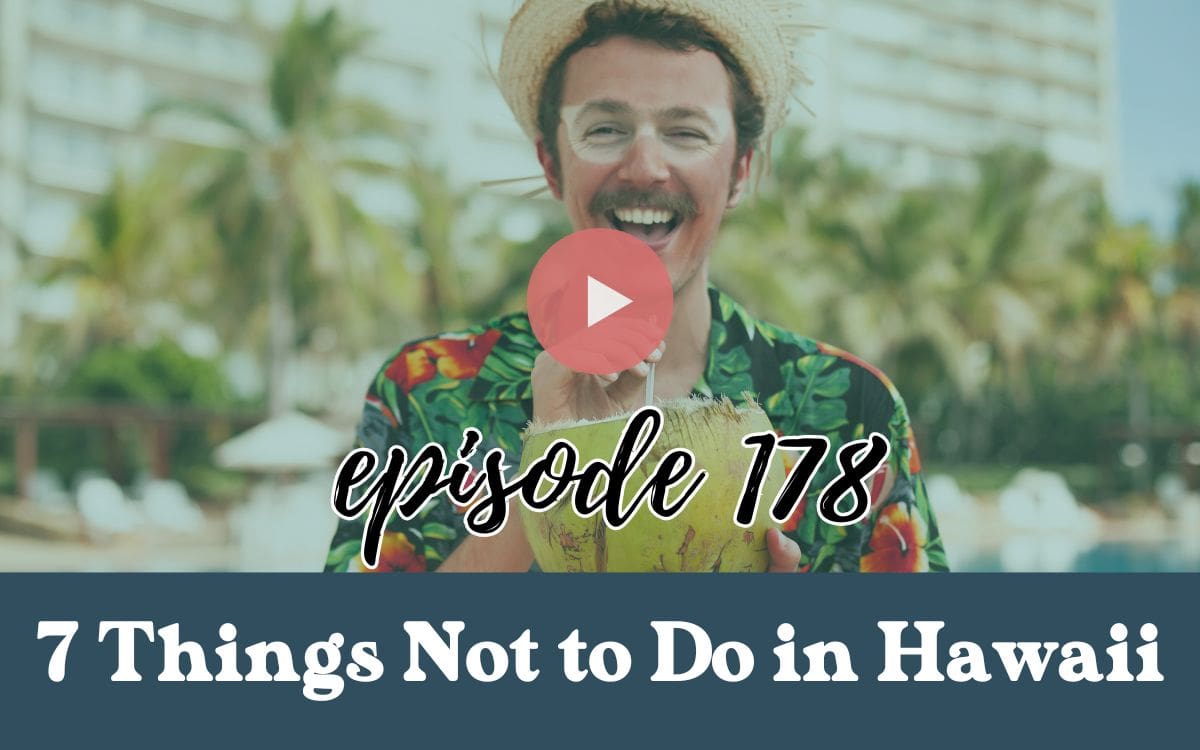
Planning a trip to Hawaii? Most travelers focus on what to do—booking tours, finding beaches, packing sunscreen. But knowing what NOT to do can make or break your Hawaiian vacation.
These aren’t your typical travel warnings. I’m not talking about forgetting your passport (spoiler: US citizens don’t need one) or booking flights early. These are the mistakes to avoid in Hawaii that can damage the environment, offend local communities, and put you in genuine danger.
You want to travel with aloha and leave Hawaii better than you found it. Here are seven critical mistakes that most visitors make—and what to do instead.
Love the Podcast? Join as a premium member today!
Affiliate Disclosure
This post may contain affiliate links, meaning I earn a small commission if you use the links. View our Privacy Policy and for more.
Mistake #1: Calling All Locals “Hawaiian”
You land in Honolulu, meet someone who’s lived there their whole life, and think you’re talking to a Hawaiian person. That’s not how it works in Hawaii.
Hawaiian means someone of Native Hawaiian ancestry (or more appropriately, kānaka maoli). The hotel concierge who’s third-generation Japanese? Not Hawaiian. The bartender whose family came from Portugal in the 1800s? Also not Hawaiian.
Only about 10% of Hawaii’s population is actually Native Hawaiian or Pacific Islander according to 2020 census data.
What to say instead: Use “local” or “kama’aina.” These terms work for anyone who lives in Hawaii or has been a resident for a while, regardless of their background.
This small change shows big respect to the native population—one of the most important mistakes to avoid in Hawaii.
Mistake #2: Standing on or Touching Coral Reefs
Coral isn’t a rock you can step on. It’s alive. Each piece of coral contains thousands of tiny animals called polyps. Step on coral, and you’re literally killing living creatures.
Coral grows incredibly slowly. Some reefs you’re snorkeling over took decades to form. One careless step destroys years of growth in seconds.
The consequences are serious: Damaged coral can result in fines up to $3,000. But forget the money—over 50% of Hawaii’s coral reefs have already suffered damage from human activity according to NOAA.
What to do instead: Float when snorkeling. Keep your fins off the bottom. Your photos will still be amazing, and you’ll help protect what’s left of these fragile ecosystems. Also, wear reef-safe sunscreen.
Mistake #3: Swimming Without Lifeguards or Where No One Else is in the Water
Hawaii’s ocean looks friendly when it’s not. Crystal clear water, gentle waves, perfect weather—it all seems inviting. But conditions change fast, even for strong swimmers.
The harsh reality: Drowning is the leading cause of fatal injuries among Hawaii visitors. Over 60% of those drownings happen at unguarded beaches.
If you don’t see other people swimming at a beach, there’s usually a reason. Maybe there’s a strong current that day. Maybe the shore break is too powerful. Maybe there’s a rip current that locals know about.
Your safety strategy: Lifeguards aren’t just there for emergencies—they’re your best resource for current ocean conditions. They’ll tell you where it’s safe to swim and what to watch out for.
When in doubt, don’t go out. Ask the lifeguard first.
Mistake #4: Hiking Illegally or Starting Your Day Late
If a trail is closed, it’s not a suggestion. Those closures protect your safety and often sacred Hawaiian land. Some trails are closed because of rockfall danger, unstable conditions, or renovations.
The alarming trend: Rescue operations for lost or stranded hikers have increased by 30% over the past five years. Most happen because people ignore trail closures or start hiking too late in the day.
Hawaii’s sun sets fast. Trails seem easy in daylight but become treacherous in the dark. You don’t want to be the person who needs a helicopter rescue because you thought you could squeeze in a quick hike at 4 PM.
The simple solution: Start early. If you see a “kapu” sign (meaning forbidden), stay out. Stick to legal, maintained trails. Your safety and Hawaii’s resources depend on it.
Mistake #5: Forgetting the Shaka When Driving
Driving in Hawaii operates on island time and the aloha spirit. Traffic runs slower, people are more patient, and there’s an unspoken agreement to be kind on the road.
When someone lets you merge or gives you space in traffic, acknowledge it with a quick wave or even better—a shaka (the hang loose gesture with your thumb and pinky extended).
It’s such a big deal that city buses flash a shaka sign on the back when you let them in. That’s actually one of my life goals—to get the shaka from the bus!
This simple gesture goes a long way in showing respect for local driving culture.
Mistake #6: Only Eating at Chain Restaurants
You flew over 2,500 miles to eat at Applebee’s? Hawaii has one of the most unique food cultures in the world—a true melting pot.
You’ve got plate lunches blending Asian and local flavors, poke that’s nothing like what you’ve had on the mainland, saimin noodles, and shave ice with local flavors that are simply amazing.
Here’s a surprising fact: Roughly 70% of Hawaii’s food is imported. When you eat at local restaurants, you support businesses that source from local farms and fisheries as much as possible. You keep money in the community instead of sending it to corporate headquarters on the mainland.
Your action plan: Ask your hotel concierge for their favorite local spot. Find the food truck everyone’s talking about. Seek out authentic local flavors.
Mistake #7: Overloading Your Itinerary
I get it. You’ve saved for this trip, you’re finally here, and you want to see everything. But Hawaii isn’t meant to be conquered like Disneyland—it’s meant to be savored.
Pack your schedule too tight, and you’ll spend more time rushing between activities than actually enjoying them. You’ll miss spontaneous moments like finding that perfect beach or sitting with locals who want to share stories about their island.
Island time isn’t just a cute saying—it’s a reminder to slow down. Leave gaps in your schedule. Plan one big thing per day, and give yourself permission to change plans if you discover something better.
The magic of Hawaii happens in the spaces between your planned activities. Don’t schedule it away.
Travel with True Aloha
These mistakes to avoid in Hawaii all come down to mindful, respectful travel. When you follow these guidelines, you’re not just avoiding problems—you’re contributing something positive to the islands.
People who live in Hawaii notice when visitors care about their home. They notice when you learn the difference between Hawaiian and local, when you’re careful around reefs, and when you respect trails and culture.
That respect comes back as better recommendations, warmer interactions, and experiences you can’t get any other way. Start planning your respectful Hawaii trip today by avoiding these seven critical mistakes.
Your thoughtful approach will make your vacation more meaningful—for you and for the islands that welcome you with aloha.
Our Favorite Hawaii Travel Resources!
🏨 Accommodations: We recommend Booking.com
✈️ Flights: For the cheapest flights, we use Skyscanner
🚗 Rental Car: We recommend Discount Hawaii Car Rental
🌋 Attractions: We recommend Viator
🌺 Luaus and Tours: We recommend Hawaii Tours
📱 Mobile Tour App: Our favorite is Shaka Guide
Listen On:
Episode Resources
🎧 Related episodes:
💻 Related blog posts:
🤙Resources mentioned:
Connect With Us
Review This Podcast On:
Planning a trip to Hawaii? Join Our Facebook Group!
It’s the perfect place to ask any questions and to be inspired for your trip to Hawaii!
Transcript
178_7 Things Not to Do in Hawaii
[00:00:00] Bryan Murphy: Most people when they are planning a trip to Hawaii research what to do, you know, pack the sunscreen, book the tours, find the best beaches, but really knowing what not to do can make or break your trip. In this episode, you’ll discover seven important things of what not to do in Hawaii. Plus we’ll talk about what to do instead.
[00:00:20] Bryan Murphy: So you can truly travel with aloha to Hawaii. Aloha and welcome to Hawaii’s Best. The podcast helping Travelers Plan an unforgettable Hawaii vacation with insider tips in featuring local voices. I’m Brian Murphy, a husband dad, three, and certified Hawaii destination expert. Each week I share local insights, travel tips, and up-to-date news sometimes with guests across Hawaii.
[00:00:47] Bryan Murphy: And sometimes solo all to help you plan your next trip to Hawaii.
[00:00:55] Bryan Murphy: Today we are kind of flipping the script a little bit. We’ve done a few episodes about what not to do, and these are seven more things of what not to do in Hawaii. Things I haven’t really talked about too much in past episodes. So instead of, you know, another list of must see things to do, I’d love to share more of what to avoid to help you travel with.
[00:01:15] Bryan Murphy: Aloha to Hawaii. You know, staying safe and actually connecting with the people and the islands. And I promise you these aren’t like typical travel warnings. I’m not gonna talk about don’t forget your passport, which spoiler alert, you don’t need a passport if you are a US citizen. But if you are traveling internationally, you do need a passport to visit Hawaii.
[00:01:34] Bryan Murphy: Not gonna talk about, you know, booking early. Best prices. I don’t even think I mentioned sunscreen on the list, but these are the mistakes that can actually hurt Hawaii’s environment. Honestly, offend local communities and put you in genuine danger. And honestly, a lot of people visiting have no idea about some of these things.
[00:01:52] Bryan Murphy: So whether you’re planning your first trip or you’ve been to Hawaii before, these seven points will help you travel more thoughtfully because really that’s what it is all about. Traveling to Hawaii with aloha. So let’s go ahead and let’s get right into it. Oh, also the first link in the show notes below, I included a free PDF guide to help you follow along with today’s episode.
[00:02:12] Bryan Murphy: Or you can download it after the episode so you can hold onto it for later planning. Alright. Number one, don’t misuse the word Hawaiian to describe all locals. This is actually something that a lot of visitors get wrong. You know, the land in Honolulu. Meet someone who’s lived there their whole life and immediately think, well, I’m talking to a Hawaiian person.
[00:02:32] Bryan Murphy: You know, if you live in California or California, but that’s really not how it works in Hawaii. Hawaiian means someone of native Hawaiian ancestry, or more appropriately kaka maoli. So that’s really it. The hotel concierge, who’s third generation Japanese, they’re not Hawaiian. The bartender whose family’s.
[00:02:50] Bryan Murphy: Came from Portugal in the 18 hundreds. Also not Hawaiian. Really, only about 10% of Hawaii’s population is actually native Hawaiian or Pacific Islander, according to the latest census data in 2020. So the right words would be local or ina these work for anyone who lives in Hawaii or who has been a resident of Hawaii for a while, regardless of their background, it is a small change, but it also shows some big respect to the native population.
[00:03:18] Bryan Murphy: Number two, don’t stand on or touch coral reefs. This one is simple, but it’s crucial. Coral isn’t a rock. It’s beautiful, but it’s not a rock that you can just step on. It’s alive, and each piece of coral is made up of thousands of tiny animals called polyps. So when you step on coral, you’re potentially literally killing living creatures.
[00:03:40] Bryan Murphy: And what makes it even worse is that coral grows incredibly slow. Some of the reefs you’re snorkeling over took decades to form, and one careless step can destroy years of growth in seconds. And Hawaii doesn’t mess around with this either. Damaged coral. You’re actually looking at fines of up to $3,000, but just forget the money for a second.
[00:04:03] Bryan Murphy: Over 50% of Hawaii’s coral reefs have already been damaged by human activity according to NOAA or the National Oceanic and Atmospheric Administration. That’s a mouthful. Every person who floats instead of stands helps protect what’s left, and the fix is easy. Float. When you’re snorkeling, keep the fins off the bottom in your photos will still be epic.
[00:04:26] Bryan Murphy: And also wear reef face sunscreen. Sorry, I didn’t think I’d mentioned sunscreen, but yeah, wear reef face sunscreen. Let’s move on to number three is don’t swim without a lifeguard nearby or where no one else is in the water. The ocean is beautiful and honestly, it can look friendly when it’s not. But crystal clear water, gentle ways, perfect weather.
[00:04:47] Bryan Murphy: It all looks so inviting, but Hawaii’s ocean can. Turn dangerous, fast, even for strong swimmers and even for swimmers who have grown up on the beach, maybe on the continental us, you know, west coast. The ocean in Hawaii is just different. The unfortunate fact is that drowning is the leading cause of fatal injuries among visitors to Hawaii, and over 60% of those drownings happen at unguarded beaches or beaches without lifeguards.
[00:05:15] Bryan Murphy: So if you don’t see other people swimming at a beach that you’re checking out, there’s usually a reason why it’s not that you’ve stumbled across like an unmarked beach or a a secret beach. Maybe there’s a strong current that day. Maybe the shore break is too powerful. Maybe there’s a rip that locals know about.
[00:05:34] Bryan Murphy: Lifeguards aren’t just there for emergencies. They’re really your best resource for current ocean conditions. You know, they’ll tell you where it’s safe to swim, what to watch out for, and when conditions change, they can let you know. So when a doubt don’t go out, but also ask the lifeguard there, and that’s will be one of the best ways to enjoy Hawaii’s water safely.
[00:05:55] Bryan Murphy: Number four. Don’t hike illegally or start your day late if a trail is closed. It’s not a suggestion. Those closures are there for your safety and often for cultural protection. Some trails cross sacred Hawaiian land and others are closed because of rockfall danger, unstable conditions or just renovations like Cocoa Head was just um, I think about a year or so ago.
[00:06:19] Bryan Murphy: But what’s really concerning with this is that rescue operations for lost or stranded hikers have increased by 30% over the past five years. And most of these happen because people either altogether ignore trail closures or they start their hike too late in the day. Hawaii’s sun sets fast and trails can seem easy in daylight, but become treacherous in the dark.
[00:06:42] Bryan Murphy: So you don’t want to be that person who. You know, needs a helicopter rescue because you thought you could squeeze in a quick height at 4:00 PM. Really, the solution is simple. Start early. If you see a kapu sign, just make sure That means you stay out. That means forbidden and stick to legal, maintain trails.
[00:07:00] Bryan Murphy: Your safety and the safety of potential rescuers and Hawaii’s resources really depend on. Number five. Don’t forget to throw the chaka when someone lets you in while you’re driving. It’s kind of a do, but you know, I turned it into a, don’t see what I did there. Don’t forget the chaka. It’s important.
[00:07:15] Bryan Murphy: Driving in Hawaii operates on island time and the aloha spirit for most people who live in Hawaii. Traffic runs a bit slower. People are more. Patient typically, and there’s really an unspoken agreement to be kind to each other on the road. And so when someone lets you merge in or gives you space and traffic, acknowledge it with a quick wave or even better a chaka, that’s the hang loose gesture with your thumb and pinky extended out.
[00:07:42] Bryan Murphy: It really goes a long way. It’s even such a big deal that the bus that runs in Hawaii on the back of it, if you let the bus in, they’re gonna flash a chaka on the back of the bus. I haven’t been that person yet. That’s like one of my life goals is to get the chaka by the bus. If you have an opportunity to let the bus in while you’re in Waikiki Honolulu area, be sure to do that so you get the chaka.
[00:08:05] Bryan Murphy: Number six is don’t only eat at chain restaurants. You flew over 2,500 miles just to eat at Applebee’s. Nothing against Applebee’s, but you get what I’m saying. You, you go down in Waikiki and you got California Pizza Kitchens, you got Cheesecake Factory, et cetera. Nothing against those places, but. Hawaii has one of the most unique food cultures in the world.
[00:08:31] Bryan Murphy: It’s really a, a melting pot. You’ve got plate lunches that blend Asian and local flavors. You got poke. That’s nothing like what you’ve had on the continental us. Simon noodles, Masada shave ice with flavors. You just local and amazing. What’s a surprising fact is that roughly 70%, that’s seven 0% of Hawaii’s food is imported.
[00:08:55] Bryan Murphy: So when you eat at local restaurants, you’re supporting businesses that source from local farms and fisheries as much as they can. You’re keeping money in the community instead of spending it to some corporate headquarters on the mainland. A good little tip is ask your hotel concierge for their favorite local spot.
[00:09:13] Bryan Murphy: Find the food truck that everyone’s talking about. I got episodes also talked about, we had Liza from a Maui blog on talked about. We had a whole two-part series about where to eat on Maui. That’s local. I’m definitely gonna link those episodes below, so go ahead and check that out. And number seven, probably one of the most important things of what not to do is don’t.
[00:09:34] Bryan Murphy: Overload your itinerary, and I totally get it. You’ve saved up for this trip. It’s time you’re here. You’re in Hawaii and you want to see everything, do everything, experience everything. But Hawaii isn’t meant to be conquered like Disneyland. It’s meant to be savored, pack your schedule too tight, and you’ll spend more time rushing between activities than actually enjoying them.
[00:09:57] Bryan Murphy: You’ll miss the spontaneous moments like finding that. Perfect beach that no one told you about, where they’re still lifeguards or sitting with locals who want to share stories about their island. You, you don’t want to rush those moments and island time. It’s just, it’s not a cute saying. It’s not just a cute saying.
[00:10:14] Bryan Murphy: It’s, it’s a reminder to slow down, leave gaps in your schedule plan for maybe one big thing per day. Five and give yourself permission to change plans. If you discover something better or unique along the way. The magic of Hawaii happens in the spaces between your plan activities. Don’t just schedule it away.
[00:10:34] Bryan Murphy: Kinda reminds me of that John Lenon quote from the song, beautiful Boy Life is what happens when you’re busy making other plants. So take time for that as you are in Hawaii. Really what this all comes down to is mindful travel. Respectful travel, traveling with aloha, all those catchphrases, because when you follow these tips, you’re not just avoiding problems or following the rules, you’re actually contributing to something positive in the islands and leaving it better than you found it.
[00:11:02] Bryan Murphy: People who live in Hawaii, they notice. They notice when visitors care about their home. They notice when you take the time to learn the difference between Hawaiian and local, and they notice when you’re careful around the reefs and respecting trails and the culture and that respect. It goes a long way.
[00:11:18] Bryan Murphy: It comes back with maybe better recommendations, warmer interactions with others, and experiences that you can’t get. Any other way. Again, if you wanna hold onto this info, just go to the first link in the show notes below. And I included a free PDF guide. And if you wanna dive even deeper into all things Hawaii, check out our super cast page.
[00:11:38] Bryan Murphy: I also linked that in the show notes below. And there are episodes that are unreleased that you can have access to by signing up for a super cast account. Alright, and I’ll see you again next week. So until then, as always. Live with Aloha
[00:11:57] Bryan Murphy: Mala for listening to this episode of Hawaii’s. Best to stay up to date on future episodes. Hit follow on your podcast app. Hawaii’s Best is a production of shore break media group with editing by easy podcast solutions and music courtesy of our friends stick figure.
RELATED PODCASTS
EP. 184: Top Hawaiian Words to Know Before Visiting Hawaii with Kahanuola Solatorio
Planning your Hawaii vacation? Learning basic Hawaiian words shows respect for local culture and transforms your travel experience. I sat down with...
Ep. 139: Hidden Waikiki: What the Hawaii Tourist Brochures Won’t Tell You with Kamaka Pili
This post may contain affiliate links, meaning I earn a small commission if you use the links. View our Privacy Policy and for more.In this special...
Ep. 137: How to Visit Hawaii With Aloha: A Conversation With Kamaka Pili, Native Hawaiian Cultural Practitioner
This post may contain affiliate links, meaning I earn a small commission if you use the links. View our Privacy Policy and for more.Have you ever...
Bryan Murphy is the creator of Hawaii’s Best Travel and a Certified Hawaii Destination Expert through the Hawai‘i Visitors Bureau. He’s an active member of the Hawai‘i Visitors and Convention Bureau and continues ongoing education focused on Hawaiian culture, history, and sustainable travel. As the host of the “Hawaii’s Best Travel” podcast—one of the top travel podcasts in the U.S.—Bryan shares practical, respectful guidance to help visitors experience Hawai‘i in a more meaningful way. His work reaches nearly half a million people across podcast, blog, and social media.





